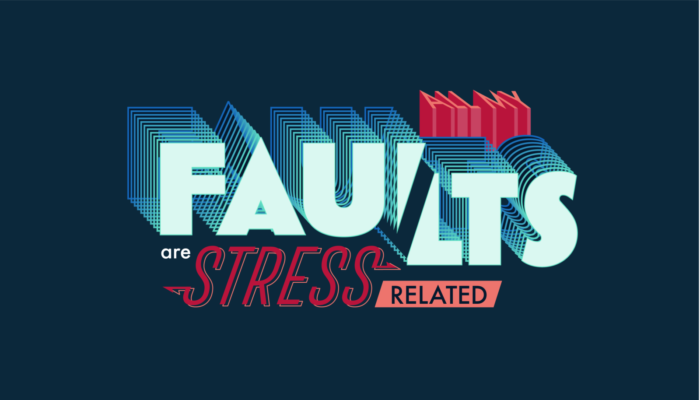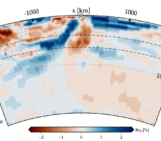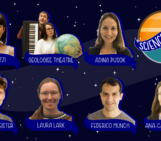
In this week’s post, Mohamed Gouiza discusses the challenges of living under constant stress, paralysed by the possibility of failure and self-perceived inevitability of impending breakup. Continental rifting, of course! Oh… did you think I was talking about life as a researcher?
 Under tensile stress, the lithosphere stretches, the asthenosphere rises, the crust fails, and rifts form. During this process, heat flow increases, melting by decompression can occur, and igneous material is either emplaced at depth or finds its way to the surface. If the stress is maintained long enough, lithospheric thinning inevitably leads to continental breakup. A new ocean is born, flanked on either side by rifted continental margins, and the rift itself is forgotten. However, lots of things can get in the way of this process completing. After all, breaking-up isn’t easy! It is then that rifts have to face a life of bullying and being labelled “failed rifts”. Yet, if anything, the Wilson Cycle teaches us that it is “successful” rifted margins are actually cursed for eternity and destined to a life of misery. Some will be consumed by subduction whilst others will get squashed between two colliding plates (a well-deserved fate if you ask me). On the other hand, unsuccessful rifts may get called names, but their life expectancy is certainly higher and they often even live happily ever after.
Under tensile stress, the lithosphere stretches, the asthenosphere rises, the crust fails, and rifts form. During this process, heat flow increases, melting by decompression can occur, and igneous material is either emplaced at depth or finds its way to the surface. If the stress is maintained long enough, lithospheric thinning inevitably leads to continental breakup. A new ocean is born, flanked on either side by rifted continental margins, and the rift itself is forgotten. However, lots of things can get in the way of this process completing. After all, breaking-up isn’t easy! It is then that rifts have to face a life of bullying and being labelled “failed rifts”. Yet, if anything, the Wilson Cycle teaches us that it is “successful” rifted margins are actually cursed for eternity and destined to a life of misery. Some will be consumed by subduction whilst others will get squashed between two colliding plates (a well-deserved fate if you ask me). On the other hand, unsuccessful rifts may get called names, but their life expectancy is certainly higher and they often even live happily ever after.
By analogy, people under an increasing amount of stress experience psychological strain, emotional eruption, meltdown, depression, and can ultimately break, just like the lithosphere. Stress is no stranger in most professional environments, and academia is no exception. It is not a secret that early career researchers in particular deal with large amounts of stress in their jobs. A 2019 survey published in Nature (Woolston, 2019) revealed that the most frequent causes of emotional strain amongst PhD students are related to the uncertainties in job prospects and the challenges of balancing work and life. Both are even more relevant in the current COVID context, with the latter also being impacted by the fact that, most of us, have been forced to work from home. This has taken away from us much needed face-to-face interactions with our peers, chances to release steam and opportunities to occasionally (ok, perhaps even frequently) rant about supervisors, failed experiments, lack of productivity and our daily struggles with that pesky “impostor syndrome”.
In science, new discoveries and inventions, devised in order to fulfil our needs and improve our lives, have often been inspired by the natural world. The examples are numerous and range from how studying the flight of birds helped advance the aircraft technology to how burrs of burdock inspired engineering the hook-and-loop style used in Velcro. Thus, I would like to argue that as geoscientists, there is a lesson to learn from failed rifts about how we can manage stress and avoid mental breakup.
“As geoscientists, there is a lesson to learn from failed rifts about how we can manage stress and avoid mental breakup”
The work by Naliboff & Buiter (2015) on rift reactivation and migration show that a lithosphere under persistent extensional stress will inevitably reach breakup. However, when rifting is interrupted by a prolonged period of tectonic quiescence and thermal cooling, the rifted plate can recover its strength and become even stronger than it was to begin with. In fact, even if extensional stresses resume, this newly found strength can prevent rifting from being successful, and thus stop breakup from happening. What does all this have to do with the daily struggles of being a researcher? – you may be wondering. Well, do you know many early career researchers that spontaneously and by their own initiative take time off work? No? I didn’t think so. Even when they do, it is rarely for long enough to allow their mind to fully recover its strength. How long is long enough is hard to say. Geodynamic models (of rifts, ECRs can’t as yet be modelled numerically, too many unknowns) suggest that the length of the quiescence period is highly variable and whether the lithosphere fully regains or surpasses its original strength is dependent on a number of boundary conditions, such as extension rate, magnitude of shear zone healing, crustal rheology, and asthenospheric rheology. The current pandemic has certainly introduced some new and unexpected boundary conditions to our day-to-day lives, and altered many others that we were familiar with before it. Our environment is more volatile and unstable than before, and we all need to somewhat recalibrate ourselves to account for these changes. Reviewing our own expectations, as well as those we place on others, is increasingly important in a COVID-dominated world. Thus, long periods of mental cooling should be encouraged now more than ever, to prevent mental rupture.
Stay safe, stay sane, take time off, and remember that success and failure are relative concepts. Sometimes it is necessary to fail to avoid breakup.
(These propositions should not be regarded as opposable, nor defendable, and were not and will not be approved by peer-review).
Further Reading: Naliboff, J. & Buiter, S.J.H. Rift reactivation and migration during multiphase extension (Earth and Planetary Science Letters, 2015) Woolston, C. PhDs: the tortuous truth (Nature, 2019)




